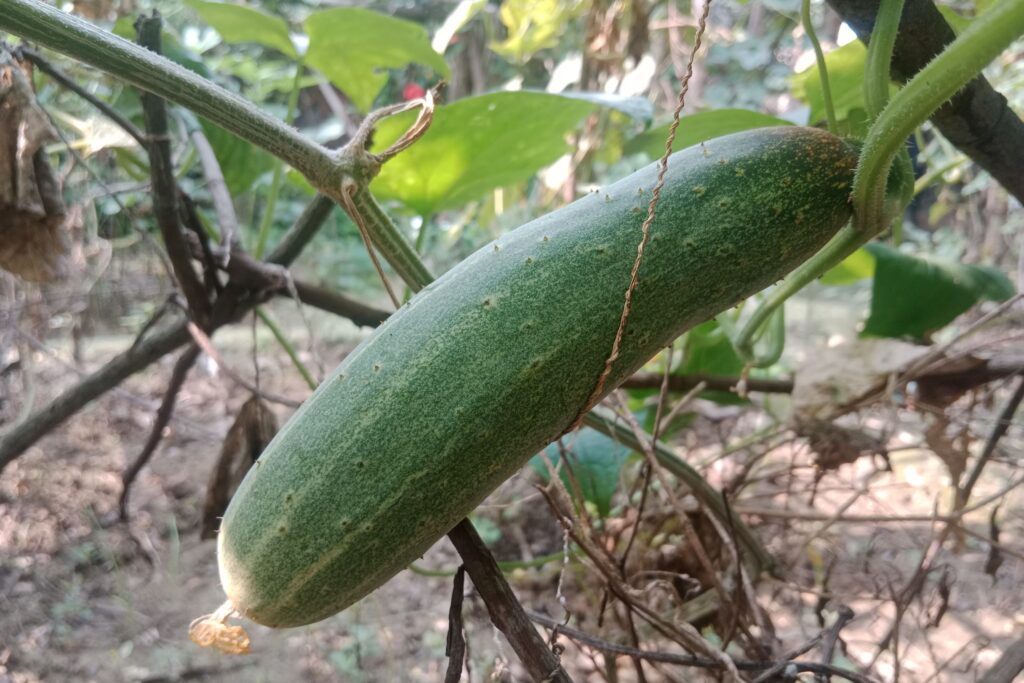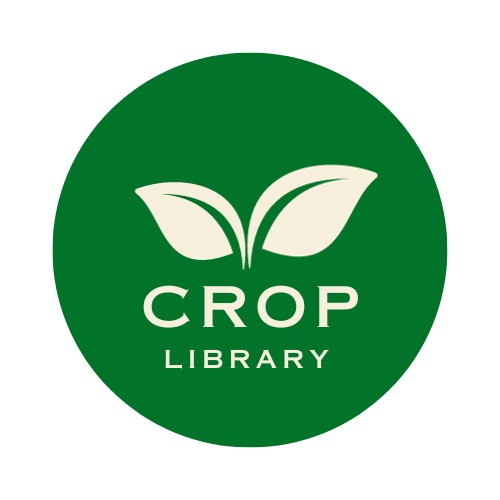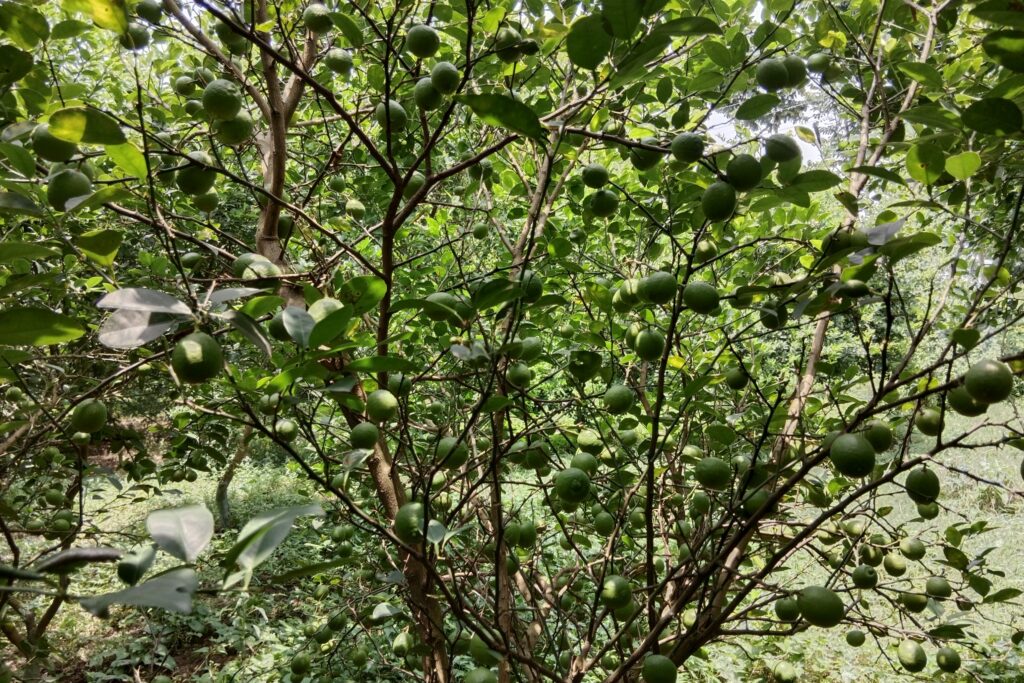Introduction
Cucumber belonging to the family Cucurbitaceae is a warm season vegetable, grown throughout the world under tropical and subtropical conditions. Cucumbers are a popular garden vegetable known for their refreshing taste and nutritional benefits. The best way to increase the yield of cucumber is to encourage healthy plant growth, 8 hours of direct sunlight, provide fertile soil, and pinch the first flowers of plant.
Apply organic fertilizer at a rate of 200 kg per 1000 square meters was applied prior to planting and mixed into the soil.

Cucumber is a highly cross-pollinated crop and prefers warm weather and bright light for its better growth and development. However it can be grown in both summer and rainy season, but it can’t tolerate cold injury. Whether you’re growing cucumbers in a backyard garden or on a larger scale, achieving a high yield can be a rewarding experience. Here are some practical tips to help increase cucumber yield:
Choose the Right Variety
Choose cucumber varieties that generate a lot of female flowers since these will produce more fruit following pollination. Because cucumber plants are monoecious, both male and female flowers grow on the same vine. Male flowers typically appear first and are essential for pollinators, followed by a mix of both male and female blooms to ensure proper pollination.
Many cucumber varieties are monoecious, but hybrid varieties may be gynoecious or parthenocarpic. Gynoecious varieties mostly produce female flowers, which is advantageous for higher yields. For such varieties, seed packets often include a few seeds of monoecious plants to provide enough male flowers for pollination.
Hybrid varieties that are disease-resistant often have a gynoecious nature, meaning they are more productive due to the abundance of female flowers. To enhance fertilization in these varieties, seeds of monoecious types are added to the seed packets, ensuring a balance of male and female flowers.
Parthenocarpic cucumber varieties are unique in that they do not require pollination, making them ideal for greenhouses or polytunnels where bees are scarce. These varieties produce seedless fruits. However, if grown in an open garden with bees, they can develop seeds. Some parthenocarpic varieties consist only of female flowers, which do not need pollination to produce fruit.
Provide Optimal Growing Conditions
Cucumbers grow best in warm, sunny conditions with well-drained, fertile soil. Ensure that the planting area gets 6-8 hours of sunlight daily and that the soil pH is between 6.0 and 7.0 for optimal nutrient absorption. To enhance soil fertility and drainage, mix in compost or well-rotted manure before planting.
Temperature and humidity are key for cucumber growth. Ideal daytime temperatures range from 20°C to 28°C, with nighttime temperatures between 16°C and 20°C. Humidity should be maintained at 60% to 80%. Additionally, sufficient light, with an intensity of at least 800 µmol/m²/s, is crucial for photosynthesis.
Plant Vertically for Better Air Circulation
Cucumbers grown on trellises or other vertical supports use less space, have better air circulation, and are less susceptible to fungal infections. Growing plants vertically also facilitates harvesting and increases plant development by allowing the plants to get more sunlight for photosynthesis. To maximize cucumber yields in greenhouses, proper spacing and trellising methods are necessary because overloaded plants can have poor air circulation and higher disease risks.
Growing cucumbers vertically, such as on a trellis or fence, can significantly increase the harvest. This method allows sunlight to reach all parts of the plant evenly, promoting vigorous growth. Additionally, vertical growing ensures good air circulation, which minimizes disease problems, and makes it easier to spot and pick ripe cucumbers.
Ensure Consistent Moisture Levels
Water is a critical factor for cucumber production due to the plant’s shallow root system, where about 85% of the roots are concentrated within the top 30 cm of soil. This makes cucumbers particularly sensitive to water availability, and inconsistent watering can affect fruit quality, resulting in bitterness or deformities. Therefore, maintaining consistent moisture in the soil is essential.
Maintaining a uniformly moist but not soggy soil is the best way to guarantee that cucumbers receive regular moisture. A good way to get water to the roots without wasting it and lowering the chance of illness from damp foliage is by using soaker hoses or drip irrigation.
For cucumber plants to flourish and yield an abundant crop, they require an abundance of water. Wilting leaves and other indicators of water stress point to the necessity of deep watering. Apply straw mulch to assist maintain moisture and give cucumber plants deep watering at least twice a week to avoid this. Cucumbers grown in containers might need to be watered every day in the summer to make sure they get enough moisture.
Fertilize Regularly
Cucumbers are vigorously fertilized plants with rapid growth and large yields. Cucumbers require the most potassium throughout their growth cycle, with nitrogen and phosphorus coming in second and third. Cucumbers want more nitrogen after transplanting, this demand peaks in the middle of the growth stage. Cucumbers require less nitrogen when they go from vegetative to reproductive growth, but they require much more phosphorus. Potassium is an essential nutrient for the duration of growth and development, which emphasizes the importance of proper nutrient management. Compost tea and fish emulsion are two more helpful organic fertilizers.
Due to their shallow root systems, cucumbers are sensitive to high concentrations of fertilizers and water. Excessive fertilization can lead to root burns, negatively affecting the plants. Therefore, it is best to apply fertilizers in small quantities but more frequently. The top dressing is essential throughout the growth period, and the type and amount of fertilizer should be adjusted according to the plant’s growth stage, with particular attention to potassium supplementation.
Combining microbial and organic fertilizers can enhance the effectiveness of fertilization for cucumbers. Microbial fertilizers improve nutrient uptake and soil health, while organic fertilizers contribute to sustainable, green farming practices. Reducing the use of chemical fertilizers and increasing organic and microbial inputs can not only yield healthier, pollution-free cucumbers but also promote vigorous growth and prolong the harvesting period.
Fertilization must be done in a balanced manner to maximize cucumber harvests while preserving plant health. More productive and sustainable cucumber farming can be achieved by knowing the nutrient requirements of cucumbers at different stages of growth and applying fertilizers accordingly.
RELATED: Cucumber Fertilizer Schedule.
Prune and Train Your Plants
Regular pruning of cucumber plants is essential for directing the plant’s energy toward fruit production rather than excessive foliage growth. By removing yellowed or diseased leaves and excess side shoots, you can enhance air circulation and reduce disease risks. Guiding the vines to grow on a trellis can help declutter the growing area and improve the quality of the fruit. Effective management practices, such as pruning, training the plants to grow vertically, and arranging them optimally, are crucial for achieving the highest marketable yields in greenhouse cucumber production.
Pinch the first flowers
While removing blossoms to improve cucumber yield may seem paradoxical, pinching off the first few female flowers can actually help the plant in the long term. By doing this, the plant receives a signal to concentrate on growth rather than premature fruiting, which eventually results in a larger yield. A cucumber plant’s total size and productivity may be restricted if it bears fruit too early in the growth cycle. By removing the first two female blooms using fingers or garden snips, you can keep the plant from going into early dormancy.
When the first few flowers on a young plant are successfully pollinated, the plant may slow down, thinking its reproductive task is complete. However, if these early female flowers are removed or shrivel naturally, the plant responds by producing more flowers and fruit, enhancing growth. Therefore, removing the first few fruits encourages the plant to continue vigorous flowering and fruiting, leading to higher productivity. After this initial pruning, the plant typically continues to thrive and produces more cucumbers.
Enhance Pollination for Better Fruit Set
In cucumbers, pollination is essential to fruit growth. Plant flowers such as marigolds, sunflowers, or zinnias close by to attract pollinators like bees. Consider hand-pollinating if cultivating inside or in greenhouses. Use a little brush to carefully move pollen from male to female blooms.
Control Pests and Diseases
Cucumber production can be significantly decreased by pests such spider mites, aphids, and cucumber beetles. Apply organic treatments such as neem oil, insecticidal soap, or diatomaceous earth to control infestations and keep an eye out for any indications of pest activity on plants. Pests can also be kept from overwintering and resurfacing the following year by rotating crops and removing plant detritus at the conclusion of the growing season.
To enhance yields, different cucumber types and planting densities require customized training methods. In order to ensure that cucumber plants receive enough sunlight for growth and have adequate air circulation around them, which helps minimize the danger of fungal infections and pest problems, optimum plant density and pruning techniques are essential.
Harvest Regularly and Timely
Cucumbers have the best flavor and texture when harvested when they are slightly underripe. Additionally, this promotes the plant to bloom more, which results in a steady flow of fresh fruits. Overripe cucumbers can stop flower growth and impair total production if they are left on the plant.
Picking cucumbers on a regular and timely basis is essential to optimizing yield. By regularly harvesting the young, vulnerable cucumbers, you may keep the plant in a productive cycle and avoid over-maturing the fruits, which can affect their texture and flavor.
Ensure Proper Spacing and Planting Density
Proper spacing between plants is essential to avoid overcrowding, which can lead to competition for nutrients, sunlight, and water. Space plants about 12-18 inches apart, with rows spaced 3-5 feet apart, depending on the variety. This spacing allows for better air circulation and reduces the risk of disease spread.


